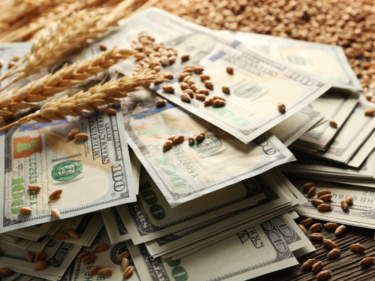Ukraine-Russia ceasefire changes risk profile for commodities
We now expect a ceasefire in the Russia-Ukraine conflict. We assume the ceasefire is “fragile” in the sense that Ukraine is not given security guarantees to dissuade further military aggression. Geopolitical risk premia remain at high levels given the still-high risk of renewed conflict. Relations between Russia and the EU fail to return to pre-conflict conditions and sanctions remain in place. Against this backdrop, we assess the implications and risks for our commodity price forecasts.
What you will learn:
- Gas: One of the biggest disruptions to commodity markets from the Ukraine-Russia conflict was to gas prices as Russia switched off pipeline gas supply to much of Europe. How will a ceasefire influence gas prices?
- Crude oil: The Russian oil sector was subject to Western sanctions soon after the onset of the Ukraine-Russia conflict. While Russian exports have, until recently, by and large managed to successfully circumvent sanctions, the additional cost and risk involved in purchasing Russian crude has meant Urals crude oil has traded at a significant discount to Brent since the start of the conflict. How will a ceasefire affect the price outlook?
- Industrial metals: The “fragile” ceasefire assumptions are unlikely to significantly change our baseline industrial metal price and supply forecasts. However, we expect only a modest increase in global metal demand due to Ukrainian reconstruction and as Europe spends more on defence. Ukrainian steel and non-ferrous metal supply will also improve.
- Grains: Russian agricultural exports have been free to flow unhindered by Western sanctions. Rather, global agricultural commodity markets have been affected by disruption to Ukrainian production and exports. How will a ceasefire influence exports and production of Ukrainian maize and wheat?
Tags:
Related Reports

Understanding the forces that drive global cotton prices
Forecasting the cotton market goes beyond understanding traditional agricultural metrics and into issues such as trade, energy and global economic trends.
Find Out More
Cotton prices weighed down by loose market fundamentals
Cotton prices are forecast to remain weak in 2024 due to strong global supply and sluggish demand, weighed down by US trade tariffs, weak consumer spending, and rising competition from synthetics.
Find Out More
What does the critical minerals boom mean for Africa? | Greenomics podcast
As demand grows for critical minerals like cobalt, copper, and lithium, African nations are navigating opportunities and risks—from boosting local employment to managing geopolitical tensions and environmental concerns.
Find Out More
Commodity price forecasts cut as tariffs weigh on demand
Most commodity price forecasts are cut due to tariffs except for gold and battery metals, which show resilience amid global market shifts.
Find Out More